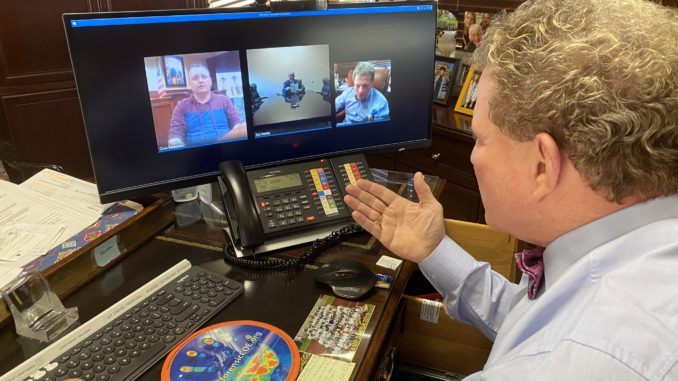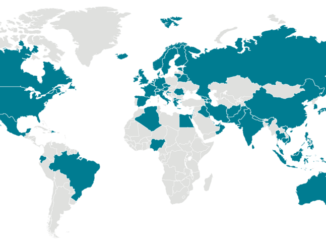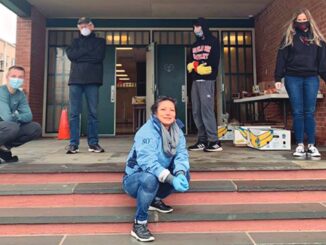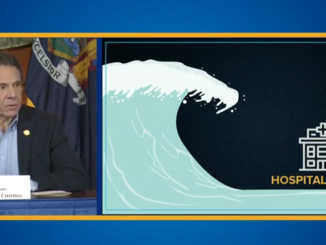
NEW JERSEY—As the Coronavirus, or COVID-19, continues to take its toll on many aspects of our life, the legal system is one of the venues that has had to adopt to the rapidly changing social landscape.
Last week, New Jersey Supreme Court Chief Justice Stuart Rabner announced that beginning March 16, there would be no new jury trials for 2 weeks, an action that was supported by New Jersey Gov. Phil Murphy.
“As part of our continuing response to the spread of COVID-19, we are suspending municipal court sessions for a two-week period,” Chief Justice Rabner said. “Where it is possible to resolve court matters without compromising the health and safety of the public and court staff, we will continue to do so.”
Judge Glenn Grant, acting administrative director of the Courts, said that the judicial system will use technological capabilities to continue court proceedings.
As such, to adhere to the issue of public safety, some law firms are now conducting motions, non-jury trials and some hearings remotely, with the use of video and telephonic equipment.
Whereas most attorneys are scrambling to get up to speed with this technology, Sam Davis, senior partner at Davis, Saperstein and Solomon, P.C., in Teaneck, who specializes in personal injury cases, has been using it for decades.
Davis made headlines worldwide with a landmark case in 1998, in which he was granted a ruling from (now retired) New Jersey Superior Court Judge Anthony J. Sciuto that allowed his client, Marin Turcinovic, a quadriplegic in a Chigago medical treatment facility and unable to travel, to view and testify at his medical malpractice trial in the Bergen County Courthouse via the internet.
Turcinovic was ultimately awarded $10 million, the reputed highest settlement for a personal injury case in the State of New Jersey.
At the time, Davis declared, “The court’s ruling is not only a victory for my client but also for the handicapped community. The decision provides an access to all those injured victims who might not otherwise be able to have their day in court.”
Davis and his partners have been using internet technology for their cases ever since, and they have the capability of video-conferencing up to 30 people at once.
“We are currently still available to see clients in our Teaneck location and our investigators are still visiting accident scenes and making house calls as needed, but we are shifting our office into a virtual configuration,” Davis said. “All of our employees will be able to work from home with the same efficiency that they do from their desks.”
Davis predicts that as the insurance companies and defense lawyers become more comfortable with the technology, it will become the norm for the procedures that have traditionally been done in a judge’s chamber or open court, such as taking depositions, arguing motions, and conducting settlement conferences with the court.
Davis explained the capabilities of legal video-conferencing.
“It allows us to meet and interact with clients ‘face to face,’ which you can’t do just by talking on the phone. We can also conference with investigators who are working cases and present visual materials that can determine the settlement amount we receive from insurance companies,” said Davis.
“So, these capabilities are persuasive and sometimes critical. When you present a motion, the impact of looking at the person who is speaking goes beyond words,” he said.
A challenge faced by law firms that use internet technology is that older clients may not be familiar with it. Some seniors do not know how do things on a computer. So, Davis’ firm tutors their old school clients in the basics, and they have a system in place that allows clients to sign documents electronically that have to be filed with various authorities. They can do this with or without internet access.
COVID-19 ups the ante on pain and suffering
Today, clients that injury law practices represent are confronted not only with the pain and suffering of their injury, but also with the anxiety of economic uncertainty and the fear of whether they can get treatment at the unusual facilities, such as a hospital or a local orthopedist’s office. They are also worried about getting their medical disability payments because so many people’s jobs have been disrupted.
As such, some current injury cases may also factor in additional pain and suffering caused by the Coronavirus crisis.
“Clients are faced with a double whammy,” Davis said. “In addition to the pain and suffering of their injury, it is harder to access doctors who are available for non-coronavirus cases, and each time clients do get a treatment, they face the risk of getting infected. So, many injury victims suffer without treatment, and this is compounded by the anxiety of not knowing when life will return to some semblance of normalcy.”
Financial insecurity, worries about the health of loved ones and being isolated can cause anxiety and depression. If you add to this mix the pain of back spasm, you have a condition that really requires psychological intervention. Our attorneys are now routinely questioning our existing clients as well as new ones about the compounded effects that the coronavirus crisis has heaped on their injury.”
When Davis was asked whether he expects that there will be COVID-19 victims who want to sue medical centers for not providing testing or emergency care soon enough, he replied, “We may get inquiries, but we have no plans to pursue them. Our plan is to be part of our community’s and our country’s recovery, not to finger point or second guess about what could have been done.”
Telemedicine adds a new and important dimensions to injury cases
In the era of Coronavirus, a major challenge for personal injury litigation lawyers is the difficulty in safely getting their clients treatment for their traumatic injuries.
But, Davis is using an innovative solution to this dilemma. Instead of in-person medical care, he is working with a large cadre of doctors to implement telemedicine, i..e, diagnosis and treatment by videoconferencing. This delivers immediate care and it avoids putting patient, doctors and staff at increase risk of infection.
Davis recently related, “I interviewed 20 physicians and psychologists, and 18 of them said that they were eager to use telemedicine to help their patients. We applaud these kinds of doctors!”
Telemedicine is actually decades old. It has been primarily used to treat patients in rural areas and prisons.
In 2017, the State of New Jersey passed parity legislation which requires treaters, i.e., physicians, nurse practitioners and physical therapists, at rates that are comparable to in-office visits.
In telemedicine, the doctor utilizes a secured connection that allows him to see and examine the patient, take a medical history and conduct a physical examination.
This may sound implausible, because there is no physical touching of any body part. But protocols have been developed where a doctor can test a patient’s range of motion, note limitations and complaints of pain and observe spasms and then make a diagnosis with a high degree of accuracy. Based on these procedures, the doctor can also determine if the patient needs to have additional testing done, such as MRI and BNGs.
The literature reports that there is a high satisfaction rate for both the patients and doctors who use telemedicine. Patients spend a lot less time commuting, they avoid the pain of getting into and out of a car, and they don’t have to wait in a doctor’s office, which may not even be a safe place nowadays. Most important, they have a lot of eye to eye contact with the doctor, as they would in an office visit.
Cutting edge tele-therapy
Forward thinking healers are also implementing video conferencing for therapy. Doctors who examine injury clients usually prescribe a course of physical therapy, even before doing MRIs.
Teletheraphy can be accomplished with objects found in the home such as a chair, a piece of rope or can filled with food to help. These items can help a patient restore range of motion and strength.
To supplement that, some therapists will send their patients basic therapy equipment, like stretchable rubber sheets called therabands, that can help rehabilitate a patient before or after their surgery.
Davis states that therapy is critical to injured clients.
“As attorneys, we are always concerned with our clients health and well being and the ability to get them full compensation for their injuries,” he said. “There is a heightened, often debilitating anxiety caused by the multiple stressors they now face during the COVID-19 pandemic, and this makes it even more important for them to keep up their physical therapy.
“Whenever there has been a lapse in treatment, the insurance companies raise that defense, suggesting that the injury was not that serious or that it wasn’t caused by the accident,” Davis said. “Telemedicine and tele-therapy with required medical documentation will prevent our clients from being taken advantage of.”
So, even though jury trials are now suspended due to restrictions on social distancing, Davis, Saperstein, and Solomon , P.C., and other law firms will continue to settle cases with both judicial video teleconferences and mediations in front of judges, and they expect this that format will become the rule, not the exception.
With these new and evolving technologies that assist the legal as well as medical communities, Davis predicts that the cornarvirus crisis is rapidly ushering in a ‘Golden Age’ of telemedicine and tele-therapy.
“As more lawyers and judges appreciate the efficiency of legal video conferencing, it will become the norm in litigation practice,” he said.



